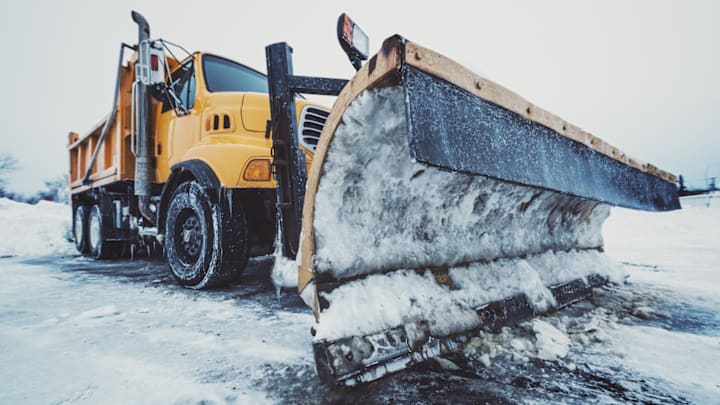The difference of a few degrees in temperature is enough to cause a logistical nightmare for towns and cities each winter. While rain that falls on roads and sidewalks tends to wash away on its own, snow can’t be ignored. In New York City, the cost of keeping roadways clear can add up to $12 million per inch of snow.
The video below from the YouTube channel Half as Interesting explains what makes the science of snow removal so complicated. Using large trucks to plow away powder is one of the most common methods, but it’s not perfect. These vehicles move at speeds of 25 to 35 mph. Going any faster isn’t effective, plus it endangers the lives of any nearby pedestrians. Snowplows need to drive over the same stretch of road multiple times to clear it, which makes the process of keeping roads safe for drivers both arduous and expensive.
One way municipalities ease this pain is by reducing the amount of snow that accumulates on streets to begin with. Salt solutions do this by lowering the freezing point of water from 32°F to 20° at most. That helps prevent snow and ice from forming on the roads, but it adds the new problem of road salt contaminating the environment and water supply. For this reason some mountain towns have looked into alternative ice-prevention tricks, including heating their streets and coating them in beet juice.
Blizzards may be a headache today, but the science of snow removal has come a long way. In the 18th and 19th centuries, the only way to get around after a snowstorm was with snowshoes or a sleigh. When the first snowplows appeared in the mid-1800s, they were pulled by horses instead of trucks.
[h/t Half as Interesting]
